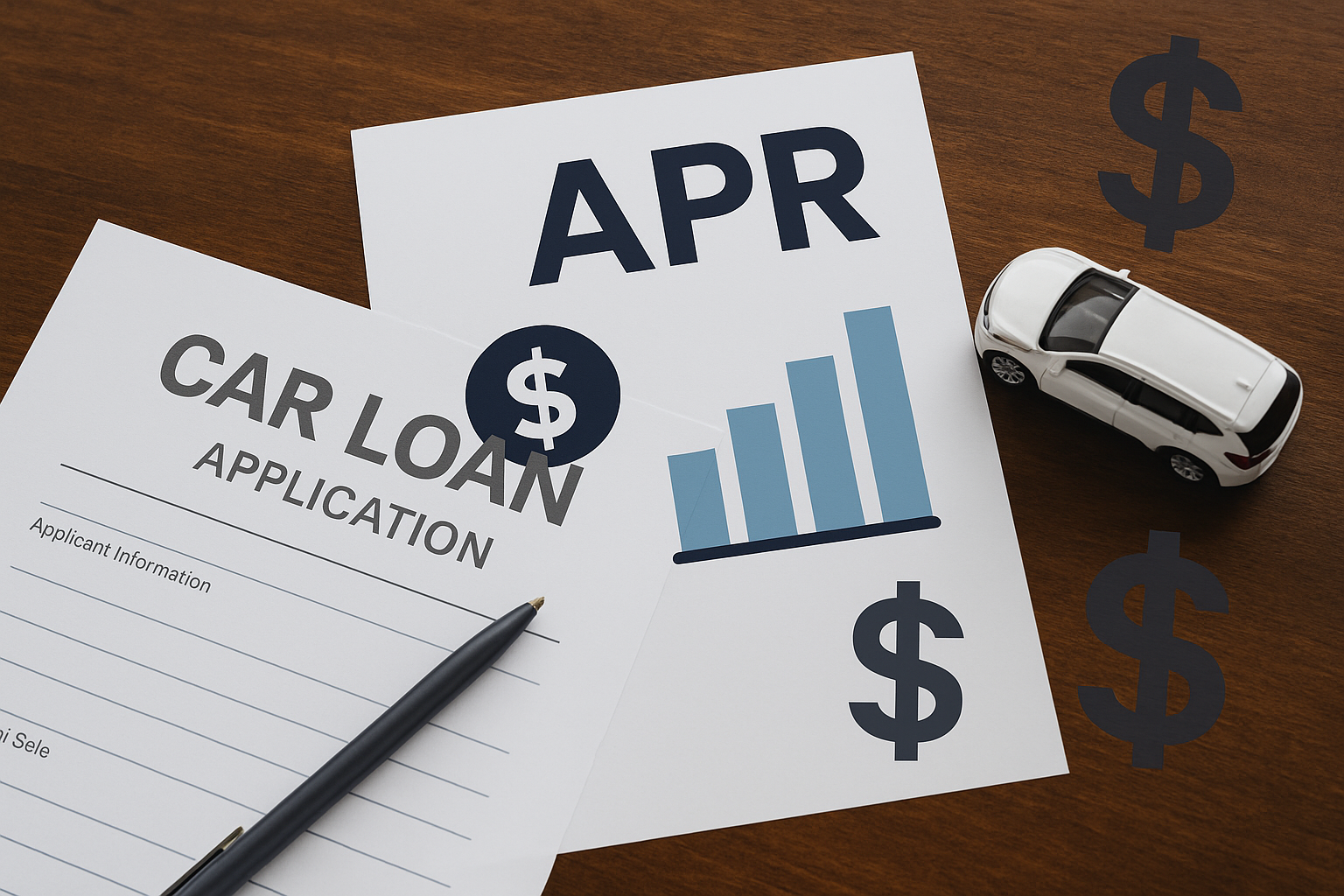When financing a vehicle, many buyers focus on the monthly payment. But what often matters more in the long run is something you might overlook—APR, or Annual Percentage Rate. Whether you’re buying new or used, your APR can dramatically affect the total amount you pay for your car, even if the monthly cost seems manageable.
This guide explains why APR is a crucial piece of the puzzle when choosing a car loan and how to use it to make smarter financing decisions.
What Is APR in a Car Loan?
APR stands for Annual Percentage Rate, and it reflects the true yearly cost of borrowing money to buy a car. It includes:
The interest rate on the loan
Any lender fees or charges (like origination fees)
Expressed as a percentage of the loan amount per year
APR is a broader measure than just the interest rate. That’s why two loans with the same interest rate can have different APRs if their fees differ.
Why APR Matters More Than Monthly Payments
It’s tempting to zero in on the monthly car payment—but that alone doesn’t tell you how much interest you’re paying or how expensive the loan is over time.
A lower APR means:
You’ll pay less interest overall
More of your payment goes toward the loan principal
You can potentially pay off the loan faster
Let’s compare:
Loan A: $25,000 loan at 3.5% APR for 60 months → Total interest: ~$2,285
Loan B: $25,000 loan at 6.5% APR for 60 months → Total interest: ~$4,340
That’s over $2,000 in savings by choosing the lower APR—even if both loans have similar monthly payments.
What Affects Your APR?
Several key factors influence the APR you’re offered:
1. Credit Score
Your credit history is the most significant factor. Better credit = lower APR.
750+ = Excellent → Best APRs (sometimes under 3%)
650–749 = Good/Fair → Moderate APRs
Below 650 = Poor → Higher APRs, sometimes 10%+
2. Loan Term
Shorter loan terms usually come with lower APRs. Lenders see longer loans as riskier.
36 months = Lower APR
72+ months = Higher APR, but lower monthly payments
3. Down Payment
Putting more money down reduces your loan amount, which can lead to a better APR.
4. New vs. Used Car
New cars often qualify for promotional APRs (as low as 0% for well-qualified buyers), while used car loans usually carry higher APRs.
5. Lender Type
APR varies depending on who you borrow from:
Banks and credit unions offer competitive APRs
Dealership financing may add hidden markups
Online lenders vary—some specialize in bad credit loans with higher APRs
How to Compare Loans Using APR
When comparing financing options:
Always ask for the APR—not just the interest rate
Use loan calculators to estimate total cost of financing
Compare APRs from at least 2–3 different lenders before choosing
Factor in any fees or add-ons rolled into the loan—they affect the APR
APR vs. Interest Rate: A Quick Summary
| Term | Definition | Includes Fees? | What It Tells You |
|---|---|---|---|
| Interest Rate | Cost to borrow the principal | ❌ No | Basic borrowing cost |
| APR | Full cost of the loan per year | ✅ Yes | True cost of financing |
Tips to Get the Best APR on Your Car Loan
Check your credit score before applying
Improve your credit if possible (pay off debts, fix errors)
Make a larger down payment
Opt for a shorter loan term
Compare lenders (credit unions often offer lower APRs than dealerships)
Avoid rolling extra costs (like warranties or add-ons) into the loan
Should You Refinance if You Have a High APR?
Yes—if your credit score improves or interest rates drop, refinancing your car loan can lower your APR and save you money. Just make sure the fees don’t outweigh the benefits.
Final Thoughts: Why APR Should Guide Your Financing Decision
APR is the single most important number when evaluating car loan options. It gives you a real picture of what your loan will cost—not just what your monthly payment looks like.
If you only focus on a low monthly number, you might end up overpaying by thousands in interest. But if you focus on getting the lowest APR, you’ll save more money over the life of your loan and be in a stronger financial position.
Before signing anything, compare APRs, know your credit, and read the full loan terms. In car financing, knowledge isn’t just power—it’s savings.

